
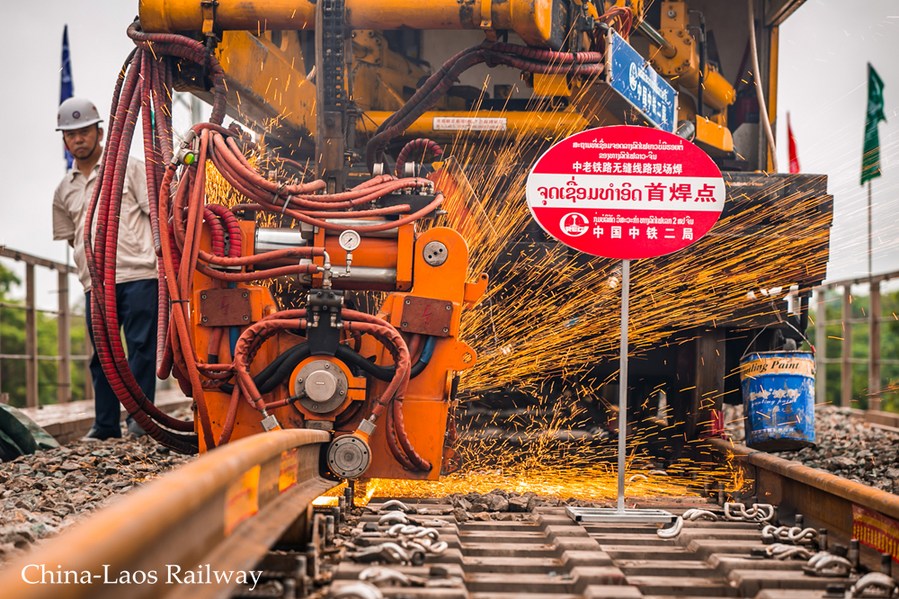
A worker from China Railway No.2 Engineering Group (CREC-2) welds the first seamless rails for the China-Laos railway in the northern suburb of Vientiane, Laos, on June 18, 2020. (Photo by Kaikeo Saiyasane/Xinhua)
The Lancang-Mekong Cooperation (LMC) has brought tangible benefits to the people in the region and promoted sub-regional cooperation.
Under the framework, a large number of projects have helped enhance cooperation in environmental protection, climate change and sustainable use of resources.
The third LMC leaders' meeting will be held via video link on Aug. 24, according to China's Foreign Ministry.
Initiated by China in 2014, the LMC consists of six countries, namely China, Cambodia, Myanmar, Laos, Thailand and Vietnam.
The Lancang River originates on the Qinghai-Tibet Plateau in southwest China. It is called the Mekong River as it flows through the other five countries before emptying into the sea.
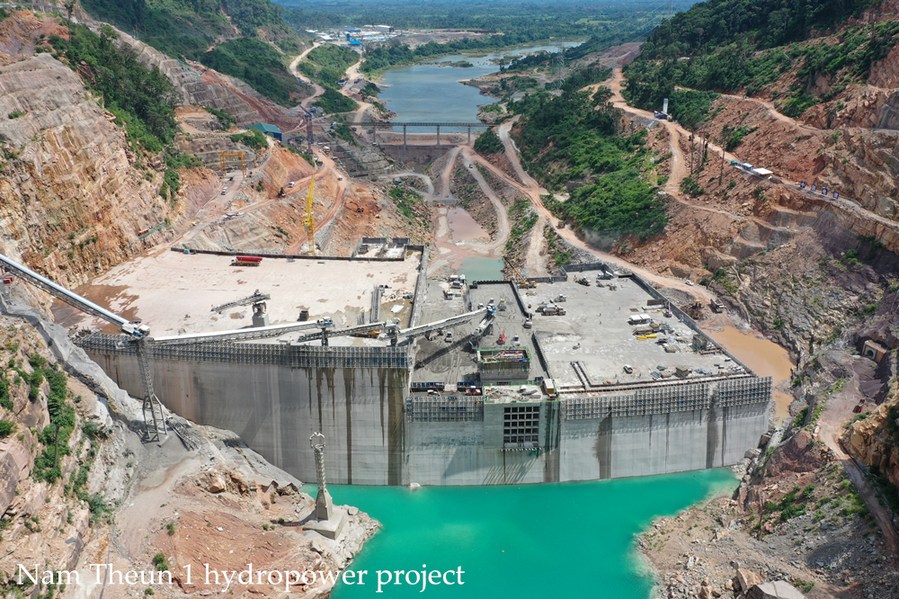
Aerial photo taken on July 17, 2020 shows the construction site of the Nam Theun 1 hydropower project in Borikhamxay Province, Laos. (Sinohydro 3/Hangout via Xinhua)
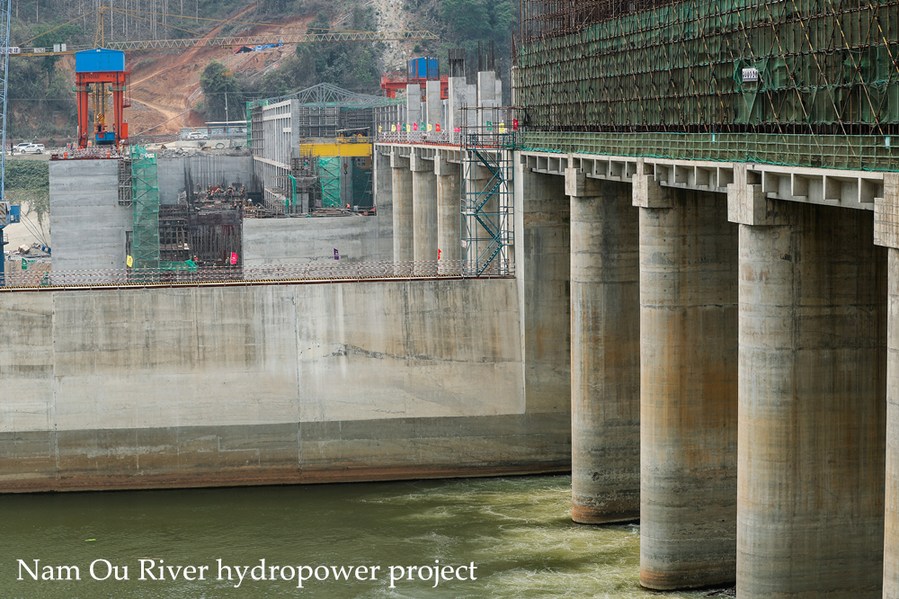
Photo taken on March 27, 2019 shows the Nam Ou River project, a Chinese-developed hydropower plant under construction in northern Laos. (Xinhua/Wang Jingqiang)
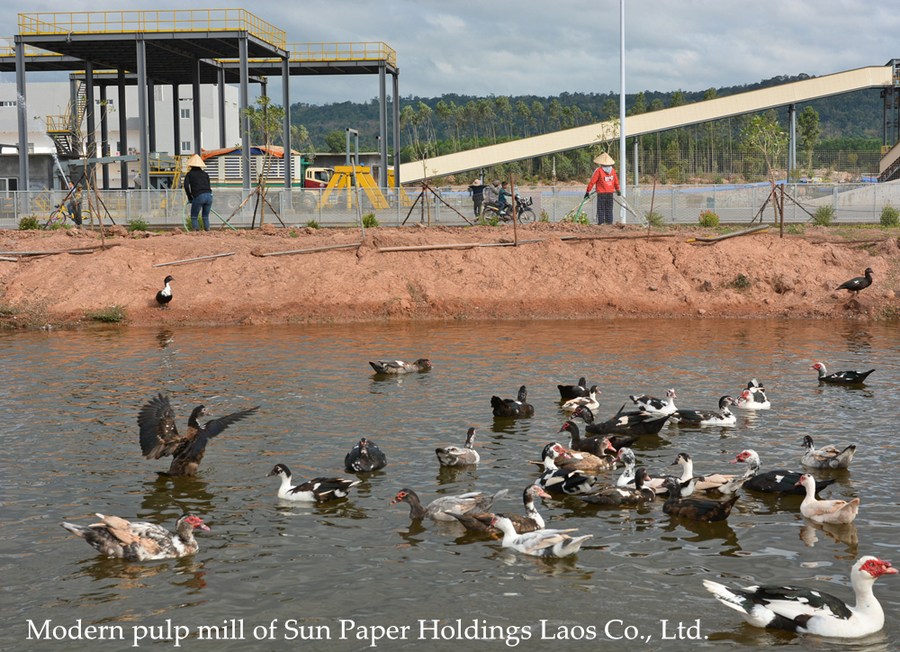
Ducks are seen at a waste water discharge port of the first modern pulp mill of Sun Paper Holdings Laos Co., Ltd., a branch of China's Shandong Sun Paper Group, in Xepon of Savannakhet Province, some 410 kilometers east of Lao capital Vientiane, on Nov. 23, 2018. (Xinhua/Liu Ailun)
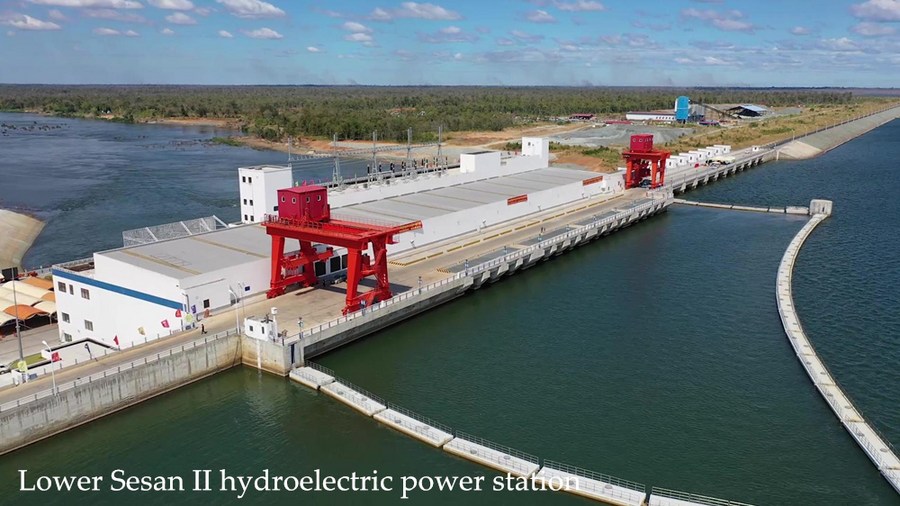
Photo taken on Dec. 16, 2018 shows the Lower Sesan II hydroelectric power station in Stung Treng province, Cambodia. The Chinese-built Lower Sesan II hydroelectric power station was inaugurated here in far northeastern Cambodia on Monday after almost five years of construction. (Xinhua)